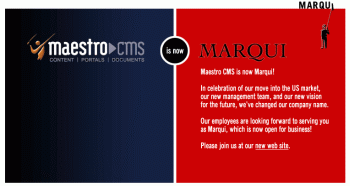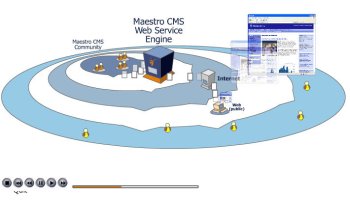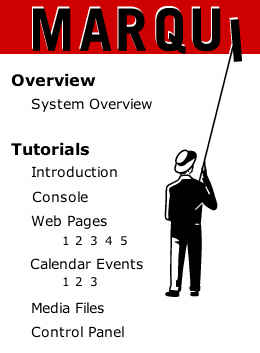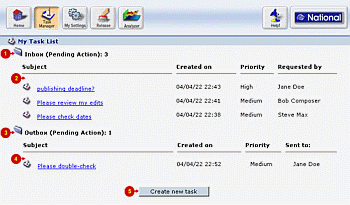Business Requirements: Marqui CMS Review - Part V
Marqui is an online-based content management system. I am on paid assignment to review and analyze their technology and this is my fifth article covering it.

In my introductory article I have set out the basic requirements that a Web-enabled organization would likely define when needing to tackle the effective selection of their ideal CMS solution.
Today, I am looking at the Marqui CMS from the specific point of view of how well it meets my reference set of CMS business requirements.
As defined in Part I of this article series, these are:
a) Training
b) Documentation
c) Warranty
d) Maintenance agreements
e) Resources required
f) Skills required
g) Scalability
h) Reference sites
In summary:
Business requirements
Project management and business requirements must also be satisfied in a CMS project. As clearly outlined before business requirements include key critical components of the system which often determine final customer choice when selecting among multiple options.
Let me review here these business requirements one by one:
a) Training
The vendor must list the training materials that exist for the CMS, and the training services that they can provide.
Marqui offers a comprehensive set of training tools and services that span from novice to "advanced technical" levels.
The training courses are available both on-site or "online", that means that Marqui is willing to travel to your company site (within continental US) or to deliver the live training session via an online web conferencing tool like WebEx or other similar ones (maximum of 8 participants accepted).
Here is what the Marqui training department has to offer:
a) Introductory - This is the basic course targeted at novice users and non-technical users such as content contributors.
Duration: 3 hrs
Cost Online: USD $ 350
Cost Onsite: USD $ 680
b) Intermediate -
Duration: 3 hrs
Cost Online: USD $ 450
Cost Onsite: USD $ 880
c) Advanced - This course focuses on Template Design Creation and it is definitely a technical course in which everything about style sheets, CSS, validating code, integrating components and "includes" is analyzed in detail. The course can be targeted and customized to the customer specific needs and actual usage.
Duration: 4 hrs
Cost Online: USD $ 650
Cost Onsite: USD $ 1,280
Training materials and a set of computer-based lessons (WinXP only) are also available for free to Marqui Technical Certified Partners (these are qualified Marqui partners that take care of actually implementing and customizing the Marqui CMS to a specific organization reality), who are also required to attend a free full-day training seminar at Marqui's own headquarters or online.

I was particularly surprised to this a good visual introduction to the Marqui CMS and its benefits to the typical organization hidden in the Overview section of this computer-based training module reserved for Certified Technical Partners. This should be rather public material accessible from the Marqui home page. Why hide it?
Unfortunately outside of the Overview section, many of the other tutorial sections available in this Director-based set of tutorials, leave a bit to be desired in terms of detail, production quality and sound. Too much emphasis on reflecting the conventions and terminology of the Marqui tabs make accessibility to the tutorial sections unintuitive for the unfamiliar user.

b) Documentation
The CMS must be supported by adequate documentation: for users, administrators and developers.
The documentation for the Marqui CMS has just been completely updated and restructured. It is accessible in the form of a contextual online help system to all users when logged into the system. Each user level gets access to the relevant online documentation for the parts o the system that he/she has access to.
The documentation covers all of the Marqui CMS functionalities according to the tabs and commands available in the interface.
Pages are very rich in content and are generally supported by good color screenshots. The whole documentation is organized like a manual in strict sequential fashion following the overall structure of the Marqui interface tabs.

General issues like security, system requirements, compatibility, log and traffic analysis, localization and language issues are not presently addressed as topics in the Help documentation. Even by performing a search on those terms nothing shows up.
Navigation in the help documentation is not as easy as it should be. There is no navigation breadcrumb and the left navigation items do not reveal which section you are visiting. Easy to get lost.
To make things worse the search function is not integrated on the help content pages making access to complementary information quite a bit harder than really needed.
I personally find this rigid organization that strictly reflects the viewpoint of whoever has designed the system UI to be highly limiting for the user who frequently comes to use such a system after experiences with other systems and tools. Wanting to impose a proprietary and UI-based help, without providing also access to all relevant content according to tasks or typical end-user issues is certainly not the best way to offer a user-centered, flexible and truly easy-to-use help system.
![]()
In other words, if the customer is not immediately ready to "map" familiar CMS publishing tasks to the UI pre-designated MARQUI categories (Console Tab,
Web Pages Tab, Calendar Events Tab, Media Files Tab, Control Panel Tab)
he may find adapting to it more difficult than really needed.
The help system should be more like a well edited and superbly organized knowledge base covering all of the possible topics and issues a customer may inquire about. An interface-driven guide such as the one presently used, which explains what each button in the system does, can only be a useful complement but it cannot act as the core supporting documentation.
In my humble opinion the Help documentation should also be open to the general public and not only to paying customers. This provides the opportunity for disseminating a lot more valuable information about the system to potential customers while allowing the same materials to act as useful reference to those interested in finding more about the product before considering a purchase.
c) Warranty
The vendor must clearly specify the warranty period provided and the specific situations where the warranty may not apply.
"Since the Marqui CMS is really a technology service warranty clauses are reduced to a minimum as all the customer has to do if unsatisfied is to stop the service."
This is what Holly Files of Marqui reported to me. Truth is that Marqui service contracts are for one year and therefore if you are not happy with what you are getting from them, you could be stuck for 11 more months. Not good.
The specific language on the Marqui CMS warranty (end user license and SLA) lasts for the duration of the service and states:
"Company warrants to Customer, for the duration of this agreement ("Warranty Period"), that the Service will substantially achieve the functionality described in the Getting Started Guides and in other documentation included as an exhibit to this agreement and that such functionality will be substantially maintained in subsequent upgrades to the Service."
d) Maintenance agreements
The CMS vendor should be able to provide alternative maintenance and support service options guaranteeing the client organization as much flexibility as possible in selecting the support and upgrade formula best fitting its needs.
Maintenance and support agreements for the use of the Marqui CMS are generally handled by Certified Technical Partners, as they are best positioned to provide all of the custom help needed by a Marqui CMS user.
Marqui also offers a set of processional custom services that range from template design and creation to content migration, addition of new features, and more. The special services are handled on a project-by-project basis and pricing varies according to specific needs.
One unique interesting item is this:
"After-hours escalation services because we want you to be able to sleep peacefully."
e) Resources required
The CMS vendor must specify any pre-existing hardware or software that the CMS must interface with, or run on. This includes specific operating systems, databases, web servers and hardware requirements.
To run the Marqui CMS a Windows server environment is required. LINUX support may be available in an upcoming release but no dates have been slated yet.
f) Skills required
The CMS vendor should clearly specify what are the skills and competences required to customize and maintain its system.
Marqui does indeed provide a very specific set of required skills for Certified Technical Partners that want to work on specific implementations. The description of the following required skills gives you a good idea of the technical knowledge level required to use the Marqui CMS effectively:
- Three or more years experience with HTML (must be able to handcode)
- Two or more years experience using JavaScript/DHTML
- Strong experience with CSS (Cascading Style Sheets)
- Strong to expert experience in basic ASP and ASP.NET
- Experience in working with a content management system
- Knowledge of Photoshop and Illustrator or some other photo optimization tool
- Knowledge or experience in using Dreamweaver/Homesite and Coldfusion is helpful
g) Scalability
The load levels that the CMS supports, and the additional resources (hardware & software) required for increased usage.
These are all of the known load limitations for the Marqui CMS:
FILES: a very large number of files will result in a long Build Schema process which is evident in any application pushing a very large number of files.
PAGE SIZE: Any page >32K in size may fail to load (our next release has been written in .NET and this issue has been addressed, however, any page >32K will result in a long load time in any application)
IMAGE FILES: Image Files (e.g., GIFs or JPEGs) should be no larger than 50KB. PDFs and Office Documents (e.g., Word, Excel, etc.) should be no larger than 1MB. Movies should be no larger than 5MB.
SUBSCRIBERS: a subscriber form with >50 user define fields on a
submit form may have difficulty displaying when searching on a 1500+
subscriber list (this issue is being addressed in an upcoming release)
TOC: TOCs designed by a user to update all TOCs with every modification may create performance problems (PS recommends against this during training)
RELEASE PAGE: when a large number of Pages and Media Files are
selected to release all at once there may be a performance degradation
encountered.
h) Reference sites
The CMS vendor must supply a portfolio of successful implementations where the CMS software has been effectively implemented. Ideally, these sites should closely match the characteristics and communication goals of your own organization.
The only information available on this front is a comprehensive list of Marqui customers is published at http://www.marqui.com/Clients/ but there are no links to actual online implementations powered by the Marqui CMS.
In the next review of the Marqui CMS I will provide my first overall impressions with the Marqui CMS, the company and the system competitiveness in the marketplace.
Stay tuned.


blog comments powered by Disqus